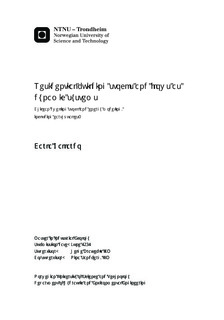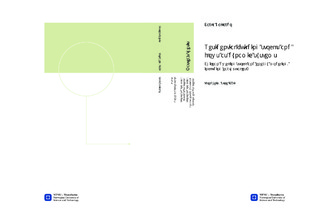| dc.contributor.advisor | Brattebø, Helge | nb_NO |
| dc.contributor.advisor | Sandberg, Nina | nb_NO |
| dc.contributor.author | Gallardo, Carla | nb_NO |
| dc.date.accessioned | 2014-12-19T12:32:05Z | |
| dc.date.available | 2014-12-19T12:32:05Z | |
| dc.date.created | 2012-11-08 | nb_NO |
| dc.date.issued | 2012 | nb_NO |
| dc.identifier | 566263 | nb_NO |
| dc.identifier | ntnudaim:7827 | nb_NO |
| dc.identifier.uri | http://hdl.handle.net/11250/242266 | |
| dc.description.abstract | The building sector comprises a very important part of each country s economy, playing an important role in the consumption of resources and energy. In practice there is little knowledge on how the building stock develops. It is useful then to understand the dynamics and the metabolism of the built environment. Research on building stocks, predominantly on the residential sector, has been performed mainly for developed countries. There is little or none research on building stock for developing countries, so given that there is still a big gap regarding service levels (floor area per capita) between developed and developing countries, it is of importance to understand the dynamics of developing countries as well.Given that earthquakes occur in populated areas, it is important to assess the dynamics of such systems. The Chilean dwelling stock is subjected to earthquakes, so this focused on including earthquake activity to the dynamic MFA model of the dwelling stock. A leaching approach was used, basing the analysis on the typology distribution of different vulnerability classes. Different scenarios were defined in order to analyze the effect of policies on building codes and practices on the typology distribution of the stock, and hence on the demolition and renovation rate due to earthquakes. Policies for strengthening and renovating the building stock have a large positive impact on overall demolition rates. Patching types of policies have little effect when it comes to making the stock less vulnerable in the long term.An energy analysis was carried out for the overall stock, based on the mass balance yielded by the building stock dynamic MFA model. Effects of policies on energy and renovation standards are observed through the analysis of scenarios as well. The energy consumption of the stock has not reached saturation yet, and the timing for this will be strongly influenced by the energy intensity development of the stock. The combined effect of policies for decreasing the vulnerability of the dwelling stock and energy efficiency policies could be further explored if each vulnerability class could be described by an energy intensity factor. Further data gathering or modeling on this would be of importance to further understand the system.Even if there is data uncertainty and the model present weaknesses, the approach used for modeling the Chilean dwelling stock allows for a systematic view of the effects earthquakes on the system. The building sector is an important contributor of CO2 emissions. A detailed carbon analysis for the future development of the building stock is then relevant to this study. However, considering the time constraints, this research has focused on the modeling of the building stock including earthquake activity and an overall energy assessment of it. A simplified carbon analysis was left out due to the fact that by considering a constant emission factor the analysis of the trends of CO2 emissions would be equivalent to the analysis of the energy model. | nb_NO |
| dc.language | eng | nb_NO |
| dc.publisher | Institutt for vann- og miljøteknikk | nb_NO |
| dc.subject | ntnudaim:7827 | no_NO |
| dc.subject | MSINDECOL Industriell Økologi | no_NO |
| dc.subject | Environmental Systems Analysis | no_NO |
| dc.title | Residential building stocks and flows as dynamic systems: Chilean dwelling stock and energy modeling, including earthquakes. | nb_NO |
| dc.type | Master thesis | nb_NO |
| dc.source.pagenumber | 82 | nb_NO |
| dc.contributor.department | Norges teknisk-naturvitenskapelige universitet, Fakultet for ingeniørvitenskap og teknologi, Institutt for vann- og miljøteknikk | nb_NO |

